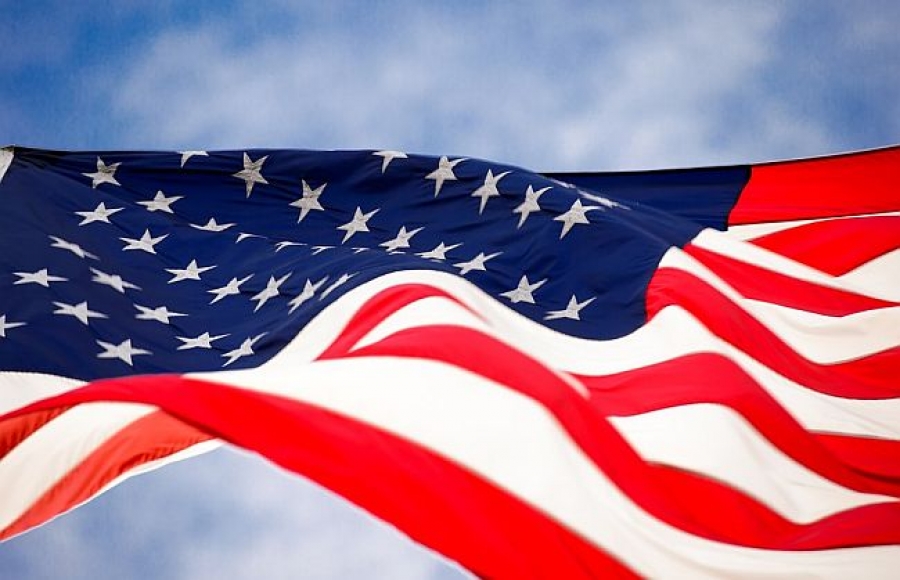Given the long and bloody fight that culminated in the nation's independence way back in 1776, Americans still have a lot of U.S. flag flying to do.
It's not surprising, that the 4th of July is one of the hottest flag flying days of the year, even though those who regularly pledge allegiance by flying the flag at home aren't always practicing correct flag etiquette.
The correct flag displaying and handling rites are outlined in United States Code, Title 36, Chapter 10 -- in what amounts to codified patriotic behavior, rather than federal law.
Any law that imposes penalties for bad flag manners were nulled by a Supreme Court decision in 1990 which struck down as unconstitutional any fines or imprisonment for those convicted of mutilating, defacing, defiling or otherwise desecrating Old Glory.
That makes the code less of a legal mandate and more of a manual of customs for handling and displaying the Stars and Stripes. Hard-nosed patriots, however, still consider it sacrilege to disrespect the flag.
And, by the way, anyone can fly the flag wherever they live in the nation, according to the "Freedom To Fly The American Flag Act of 2005" enacted largely because some homeowner associations enforced architectural rules with near dictatorial dogma to stop some home owners from flying the U.S. Flag.
So, according to federal code, here's how to honor those broad stripes and bright stars as you fly them at home on Independence Day and on other flag flying days to come.
The Patriot's Guide To Flying The U.S. Flag At Home
Many holidays are designated "flag flying days," but you can fly the flag outside only from sunrise to sunset, unless it is illuminated for night time display.
Do not fly the flag outside during inclement weather unless you use an all-weather flag.
Do not fly another flag above the U.S. flag, or if the other flag is on the same level, do not fly another flag to the right of the U.S. flag.
Fly the flag with the "union" (the blue field of white stars) at the peak of the staff (unless the flag is at half staff) when flying the flag from a staff projecting horizontally or at an angle from the window sill, balcony, or front of a building.
When you suspend a flag over a sidewalk from a rope extending from a house to a pole at the edge of the sidewalk, hoist the flag, union first, from the building.
When you display the flag over the middle of the street, suspend it vertically with the union to the north in an east and west street, to the east in a north and south street.
When you display a flag horizontally or vertically against a wall or in a window, place the union uppermost and to the observer's left or the flag's right.
Display the flag with the union down only as a distress signal.
Fly the flag at half-staff (positioning the flag one-half the distance between the top and bottom of the staff) at times specified, often according to presidential instructions.
When flying the flag at half-staff, it should be first hoisted to the peak for an instant and then lowered to the half-staff position. The flag should be again raised to the peak before it is lowered for the day.
Never allow the flag to touch anything beneath it, including the ground, the floor, water or other items.
Never carry the flag flat or horizontally, but always aloft and free.
Never use a flag as wearing apparel, bedding, drapery, ceiling covering or decorative element. It should never be festooned, drawn back, nor up, in folds, but always allowed to fall free.
Never use the flag for advertising purposes. Don't embroider it on articles, print or impress it on disposable items.
Don't use a part of the flag as a costume or athletic uniform. A flag patch may be affixed to the uniform of military personnel, firefighters, police, and members of patriotic organizations. A lapel flag pin should be worn on the left lapel near the heart.
Protect the flag from display, use or storage that will cause it to be easily torn, soiled or damaged.
Never place things on the flag or attach marks, insignias, letters, words, figures, designs, pictures, or drawings
Don't use the flag as a receptacle for receiving, holding, carrying, or delivering anything.
Aged flags no longer fit for flying -- like those wind whipped ones often found on personal vehicles -- should be destroyed in a dignified way, preferable by safely burning it.







